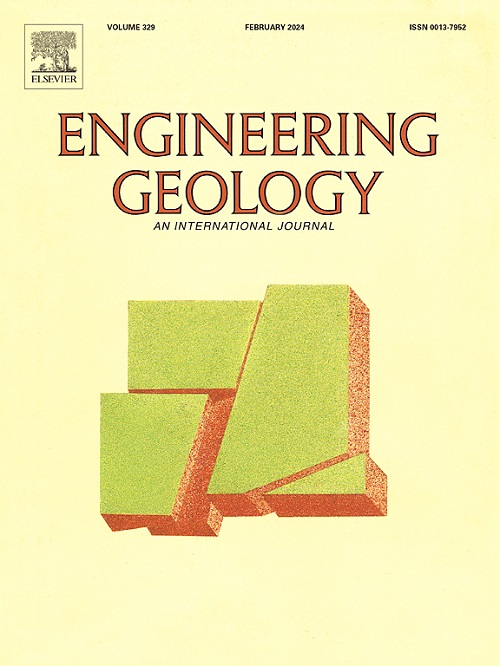AI-Supported probabilistic steady-state and transient seepage analysis of an embankment dam with clay core: A case study on Büyükcekmece Dam
IF 6.9
1区 工程技术
Q1 ENGINEERING, GEOLOGICAL
引用次数: 0
Abstract
The integration of the finite element method with probabilistic approaches accounting for uncertainties has become a widely adopted strategy for accurately modelling seepage (Q) in embankment dams. However, this approach is time-intensive, prompting this study to conduct a probabilistic analysis encompassing both steady-state and transient seepage to demonstrate the efficiency of using artificial neural networks (ANN) for accurately estimating Q values, thereby significantly reducing the reliance on extensive finite element simulations. In this context, first, the variability in the permeability of the clay core of embankment dams was investigated. Permeability was modeled as a random variable using two different approaches: First, as a log-normally distributed random variable for the entire clay core; and second, using random field theory, as a spatially correlated log-normally distributed random variable in horizontal layers. The data obtained were analyzed with artificial neural networks (ANN) and artificial bee colony (ABC) to ensure the consistency of the analyses. In all steady-state analyses, the lowest discharge was obtained when spatial variability was considered. Finally, the trained ANN-ABC network was utilized to estimate Q values for 0.75 COV (ks), a scenario for which finite element analyses were not conducted. This approach demonstrated the efficacy of using ANN to obtain Q values efficiently, thereby eliminating the need for labour-intensive finite element analyses.
基于人工智能的粘土心坝概率稳态与瞬态渗流分析——以b yy kcekmece坝为例
将有限元法与考虑不确定性的概率方法相结合,已成为堤防大坝渗流(Q)精确建模的一种广泛采用的策略。然而,这种方法非常耗时,因此本研究需要进行包含稳态和瞬态渗流的概率分析,以证明使用人工神经网络(ANN)准确估计Q值的效率,从而显著减少对广泛的有限元模拟的依赖。在此背景下,首先,研究了土质坝芯渗透性的变异性。渗透率采用两种不同的方法作为随机变量建模:首先,作为整个粘土岩心的对数正态分布随机变量;其次,利用随机场理论,作为水平层中空间相关的对数正态分布随机变量。利用人工神经网络(ANN)和人工蜂群(ABC)对所得数据进行分析,确保分析结果的一致性。在所有稳态分析中,当考虑空间变异性时,获得了最低的流量。最后,利用训练好的ANN-ABC网络估计0.75 COV (ks)的Q值,这是一种没有进行有限元分析的情况。这种方法证明了使用人工神经网络有效地获得Q值的有效性,从而消除了对劳动密集型有限元分析的需要。
本文章由计算机程序翻译,如有差异,请以英文原文为准。
求助全文
约1分钟内获得全文
求助全文
来源期刊

Engineering Geology
地学-地球科学综合
CiteScore
13.70
自引率
12.20%
发文量
327
审稿时长
5.6 months
期刊介绍:
Engineering Geology, an international interdisciplinary journal, serves as a bridge between earth sciences and engineering, focusing on geological and geotechnical engineering. It welcomes studies with relevance to engineering, environmental concerns, and safety, catering to engineering geologists with backgrounds in geology or civil/mining engineering. Topics include applied geomorphology, structural geology, geophysics, geochemistry, environmental geology, hydrogeology, land use planning, natural hazards, remote sensing, soil and rock mechanics, and applied geotechnical engineering. The journal provides a platform for research at the intersection of geology and engineering disciplines.
 求助内容:
求助内容: 应助结果提醒方式:
应助结果提醒方式:


